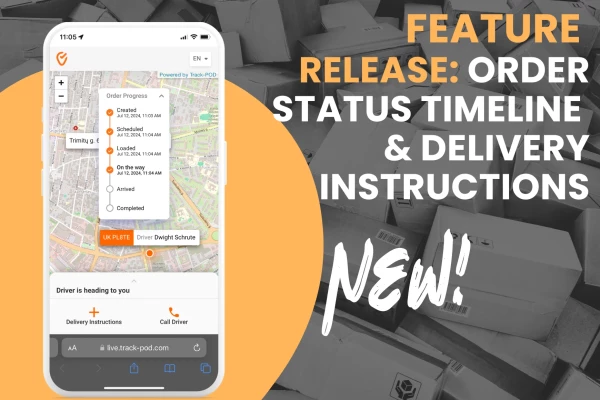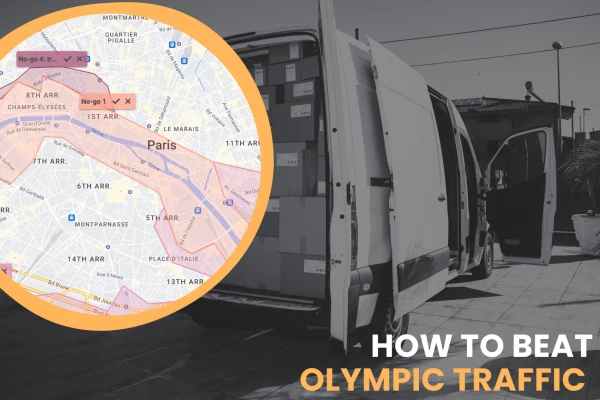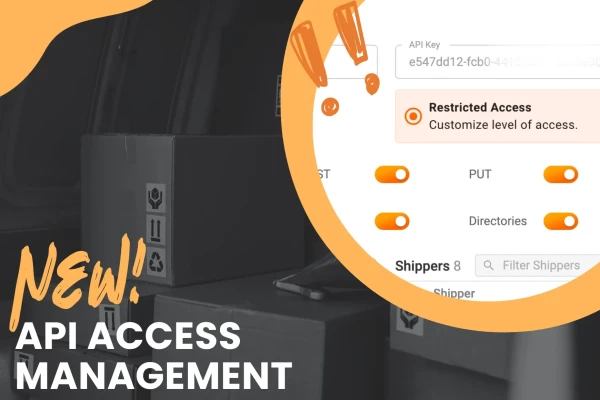How Many Routes Do Delivery Drivers Take On a Normal Day?

by
Alisa Cvilij
June 21, 2024
One of the world's leading experts in delivery logistics, FedEx, has reported stats indicating that in the fiscal year of 2023, the average daily package volume reached 9,2 packages per day. This data proves there are many routes that delivery drivers take on a normal day.
Now, one can predict how important route planning is to delivery logistic businesses.
Sometimes, it seems that among all other tasks, it is the hardest and most important for these businesses.
As part of the entire delivery route planning process, delivery business owners must consider other key factors that influence these delivery routes - mapping out each location stop for drivers, determining the most logical order for how many stops delivery drivers take per day based on their proximity, traffic conditions, etc.
This blog post focuses on answering questions like how many routes delivery drivers take on a normal day while exploring the variable measurements influencing the drivers’ delivery routes.
If you are interested in the topic, keep scrolling for more details!
How many routes do delivery drivers take on a normal day?
It depends on the scope of the delivery business service, its size, and most importantly, the demand for delivery of that particular company.
- Big delivery companies like FedEx, which offer last-mile shipping, have high order volume. An average driver can deliver 75 to 125 packages daily in such companies.
However, these delivery numbers are very high compared to smaller delivery service hubs with drivers who offer an average of 15 to 25 packages delivered on a normal day.
Can delivery logistic businesses plan a delivery route?
Yes, they can, and they MUST do it - no successful delivery logistics company functions without planning its driver’s delivery routes.
Planning drivers’ delivery routes are the key to enhancing the whole delivery trajectory, and thankfully, many delivery management software programs can do that job. These software’s algorithms are very beneficial in optimizing drivers’ delivery routes while considering all prevailing factors that influence the planning process of these routes.
Planning the driver’s routes is essential, especially in last-mile delivery routes. In addition to consolidating the deliveries in a certain area, it minimizes travel time and fuel costs while ensuring timely delivery.
Such delivery route planning results in customer satisfaction by streamlining the delivery process.
How can delivery businesses plan delivery routes (variables that measure drivers' delivery routes)
-
The locations where drivers take routs (big cities vs. rural areas)
All delivery drivers have an upfront delivery schedule for all the shipments they must deliver in a day.
The location of these routes, whether in high-traffic, urban, rural, or hard-to-reach areas, can be used as a measure when planning drivers' delivery routes.
We have to give you an example to picture this the right way.
Imagine drivers who are delivering large furniture items. They must consider routes accommodating bulky goods, like wide roads or locations with ample landing space. That noted, they might have to take different route choices if you compare them to drivers handling small packages who can navigate through narrower streets and make more frequent stops.
The difference is obvious, highlighting that the delivery size is yet another factor (variable) in measuring the practicality and logistics of drivers’ daily routes.
Traffic jams are also among the top factors (variables) that can be used to measure the number of routes drivers take per day. Most drivers use real-time data from GPS systems to navigate through congested areas effectively.
High congestion can lead to longer delivery times. To cope with these challenges, delivery logistics businesses must develop strategies like alternative route planning and scheduling deliveries during off-peak hours.
-
The type of business in which drivers operate
Ultimately, it all comes down to the type of business drivers operate each day.
Some delivery business services have a lower demand for routes on a normal day than others.
For instance, a grocery delivery service in condensed, urban areas might focus on densely populated locations with drivers making frequent stops.
In contrast, the drivers of a medical supply delivery service might prioritize routes that include hospitals and clinics across a wider geographic area, denoting that each business type requires specific route planning based on the nature of its deliveries.

Last-mile deliveries vs. long-term routes of truck drivers
Usually, last-mile delivery routes involve navigating through densely populated areas where drivers must make frequent stops. That is a huge factor impacting the overall driver’s delivery route.
Also, last-mile delivery routes require flexibility due to unpredictable urban conditions.
In contrast, long-term truck routes prioritize highways and larger distances and must adhere to strict delivery schedules. They impact the driver’s delivery routes in a way that must be meticulously planned regarding logistics and maintenance.
How does delivery management software help plan delivery routes?
Delivery management software, among other things, was invented to help delivery logistics companies schedule drivers’ delivery routes according to driver’s availability, stops, timings, etc.
For example, let’s look at the advanced delivery management software Track-POD.
Besides offering automation for almost all prominent operations of a delivery logistics company (delivery tracking, analytic reports, up-to-date detailed maps, safety management, monitoring arrival and departure times, API Integration, etc), the software also has other built-in features like:
- Scheduling deliveries according to the driver’s availability.
- Planning driver’s stops and timings and thus streamlining the driver's delivery process.
- Real-time driver performance monitoring and delivery confirmation.
- They save time on manual planning of drivers' delivery routes.

Another convenient feature of this software is the instant automated notifications, which inform customers about something concerning the package they are waiting for.
The notifications can concern anything concerning that particular customer’s order, such as the estimated time of arrival (ETA), updates or alerts about possible delays, or a delivery confirmation notification once the delivery is made.
These notifications can be sent as SMS messages or via email. This builds trust and ensures that disappointed customers will not likely leave bad reviews about the delivery company's service.
Conclusion
None of the variables mentioned above (measurements) should be taken lightly when considering how many routes last-mile delivery drivers take daily - each factor has a separate (big) impact.
Drivers’ delivery routes can and should be planned—at least, that is something all successful businesses in the industry do.
Once delivery businesses implement the right delivery management software, half of their job is done. This ensures smooth and efficient planning in every aspect of the delivery process.
Get a demo at Track-POD and experience the benefits of automated delivery management, route optimization, automated order import, live tracking, and more in multiple languages now!
About The Author
Alisa Cvilij
Content Marketer at Track-POD. Passionate about building meaningful and helpful content for the readers.







